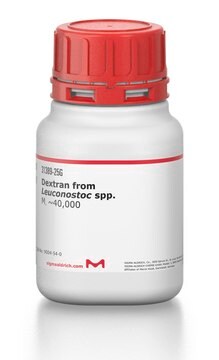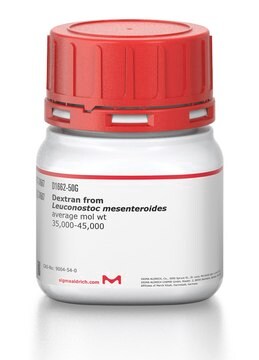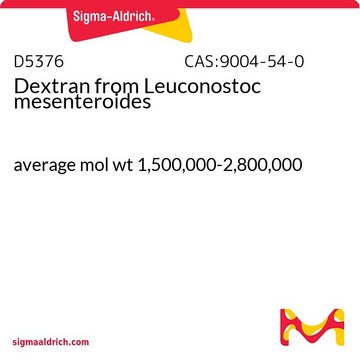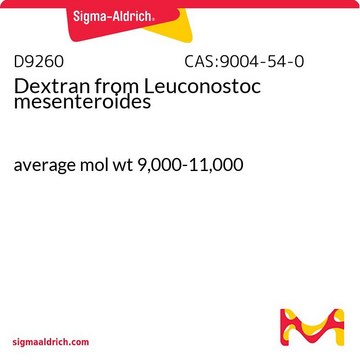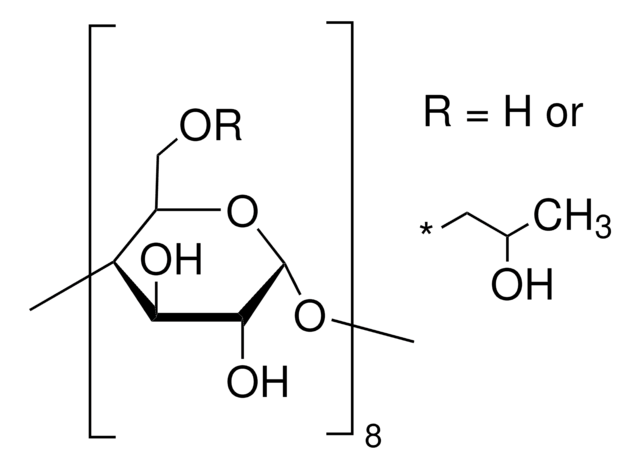D8802
Dextran solution from Leuconostoc mesenteroides
20 % (w/w) (Autoclaved)
Sinônimo(s):
repeating α-linked D-glucopyranosyl units, synthesized from sucrose by Leuconostoc mesenteroides
About This Item
Produtos recomendados
forma
liquid
Nível de qualidade
peso molecular
average mol wt ~500,000
concentração
20 % (w/w) (Autoclaved)
cor
colorless
densidade
1.00-1.20 g/mL
aplicação(ões)
hematology
histology
temperatura de armazenamento
2-8°C
InChI
1S/C18H32O16/c19-1-5(21)9(23)10(24)6(22)3-31-17-16(30)14(28)12(26)8(34-17)4-32-18-15(29)13(27)11(25)7(2-20)33-18/h1,5-18,20-30H,2-4H2
chave InChI
FZWBNHMXJMCXLU-UHFFFAOYSA-N
Descrição geral
Aplicação
Código de classe de armazenamento
10 - Combustible liquids
Classe de risco de água (WGK)
WGK 2
Ponto de fulgor (°F)
Not applicable
Ponto de fulgor (°C)
Not applicable
Escolha uma das versões mais recentes:
Já possui este produto?
Encontre a documentação dos produtos que você adquiriu recentemente na biblioteca de documentos.
Os clientes também visualizaram
Nossa equipe de cientistas tem experiência em todas as áreas de pesquisa, incluindo Life Sciences, ciência de materiais, síntese química, cromatografia, química analítica e muitas outras.
Entre em contato com a assistência técnica